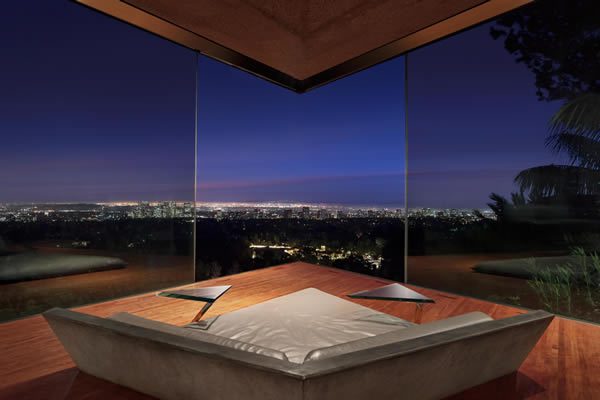Table Of Content
A distinctive feature on some Italianate homes is a tower, cupola (a raised dome), or belvedere (windowed gallery above the roofline). Though not require, or necessarily common, they are a hallmark of the style that can make an Italianate structure easy to identify. Generally square, not rounded, these features offered the possibility for better viewing of the surrounding landscaping, which was another important factory in Italianate design. Italianate homes on larger grounds may have abundant green space that include features like follies, grottos, and winding pathways that offered picturesque views of the house.
Italianate mansion to be saved, moved by city of Muskegon - MLive.com
Italianate mansion to be saved, moved by city of Muskegon.
Posted: Wed, 28 Jun 2023 07:00:00 GMT [source]
What makes Italianate architecture unique?
They were also elaborately crafted and, to some extent, lavishly decorated using cast iron. Since these houses, and subsequently porches, were made using many different building materials, it wasn’t odd to find decorations made with cast iron. Every architectural style has definite characteristics that set it aside from other Classical or Victorian architectural styles. This is evident with the evolution of Italianate architecture throughout the years.
Osborne Wood Products
Between 1840 and 1850, he designed buildings and residences in the Gothic, Italianate, Egyptian, and Moorish Revival styles – at times combining elements from the different concepts. The house contains unique decorative details like low-pitched roofs, a belvedere, and overhanging eaves. Furthermore, the house has a total of 8 rooms, and each still retains its original Italianate architecture. The stucco and brick exterior of the house tells of the intricately designed Italianate style. Additionally, the main floor contains formal and informal parlors, a large library, and a dining room. Furthermore, the rooms in the house are furnished with historic toys, Duncan Phyfe furniture, and other period pieces and heirlooms.
Italianate Style: Renaissance Architecture in the New World
'It's a good place to get away with bad things': OTR leaders want help with vacancy, graffiti and crime - WCPO 9 Cincinnati
'It's a good place to get away with bad things': OTR leaders want help with vacancy, graffiti and crime.
Posted: Mon, 04 Mar 2024 08:00:00 GMT [source]
During the construction of the house, a landscape designer was hired to create the brick-walled garden at the rear of the house. It is one of the only 19th-century Savannah gardens that are open to the public. Italianate American houses were mostly constructed with wood clapboard, stucco, and brick. Since they were all stand-alone houses, there was an emphasis on using the strongest and best materials.
Italianate Architecture and History

The same applied to row houses, and brick was the most expensive but durable material of the time. The floor plans for most Italianate homes were similar and flexible, with many outlets and inlets. For instance, you could not confuse public sitting spaces and small quiet nooks for when one wanted to be alone. They are large and rectangular and ensure that structures don’t collapse. The style works well, and other Victorian-era styles, like Romanesque and Gothic revival, adopted it at different stages.
Examples of Italianate Houses
The possibilities for use of the property are endless with its central location in Johnson City and size. It’s a dialogue between the structure and the rich context of the site, characterized as rustic charm, with the new work, having a relationship between the warmth of the old materials and the simplicity of the modern. And finally, the outcome of the conversion presents the benefits of the measures undertaken in preserving and reinterpreting history whilst accommodating modern life without sacrificing either objective.
Roof
Characteristically, the sides slope downward from the crest or a square cupola on the top. Of course, the “L” shaped structural design ensures that the brackets are arranged in pairs or singly. Note that it was common to use brackets, and theywere used for additional roof support. Projecting eaves with large brackets in a variety of shapes and spacing dominated the cornice. Arranged singly or in pairs, the brackets were usually underscored with wide decorative bands and sometimes further elaborated with panel moldings. Brick and wood clapboard were the most common building materials for Italianate homes with brick being more expensive.
While there is plenty of variation in the application of the style, there are a few key characteristics that help identify an Italianate house. Typically constructed with brick or wood clapboard, the features of Italianate houses give them a vertical visual emphasis, meaning they look tall and stretched upward. True Italianate homes are usually two or three stories—sometimes more, but rarely just a single level—and generally offer a layout that is compact rather than extended far horizontally. According to the National Park Service, they usually have asymmetrical floor plans inside. Portmeirion in Gwynedd, North Wales, is an architectural fantasy designed in a southern Italian Baroque style and built by Sir Clough Williams-Ellis between 1925 and 1975 in a loose style of an Italian village.
In Italianate-style homes, quoins were built into the corners of the main building. Additionally, they are usually for decorative purposes, and others provide structural support for a wall made with weaker materials like stone or rubble. We blend timeless character and modern sensibility to bring any Italianate home in the DC metro area into a new era of style while preserving its original charm. Our period home renovations are ideal for anyone looking to update their interior or facade without sacrificing beauty. Italianate homes were a beautiful sight, with brick and wood clapboard being the popular materials used for construction.
Let’s explore the Italianate architecture style, its origins and defining features, key architects of the style, and some of the existing historic examples. Of the multiple styles in the Victorian architectural era, Italianate style is the most passionate since architects had more artistic freedom. The floor plans were less rigid than other 19th-century or Victorian styles. However, what any Italianate villa reveals in its floor plan, is that there was still respect for keeping symmetry.
Many sources credit British architect John Nash for creating the first Italianate structure in Cronkhill in 1802, though the architectural style fully developed in later decades. If you’re fascinated by the decorative brackets and details on the front porch, the lovely bay windows, and the tall rounded ones, and other fanciful accents, remember that the Italianate style offers tremendous design flexibility and adaptability. In addition to Cincinnati, Covington, Kentucky; the Garden District of New Orleans; and parts of California feature Italianate architecture. In San Francisco, the Painted Ladies, row houses in the Queen Anne style, are celebrated examples of the time period that saw the rise of Italianate style, and they display aspects of the romantic, whimsical architecture.
The style also popularized arched and curved frames in America — bringing a touch of Italian flair to many homes. This historic house by New York architect John Norris has been described as Italianate, most notably because of its urban garden landscaping. To get the full sense of Italiante details, especially the roof, the observer must step back both physically and in time. Nineteenth-century thought was focused on the family with unprecedented urgency, and for good reason. As the Industrial Revolution matured, it produced an astounding population explosion in America’s cities. (One source cites an urban growth rate of 700 percent in the 30 years before the Civil War.) Dirt, disease, crime, and pollution made American cities unsuitable backdrops for family life.
The owners ultimately decided to tear down the structure to make way for a new one, an Italianate mansion that was already halfway through construction when AD100 alum Madeline Stuart came on board, after a previous designer had been cut loose. The ornamentation and other decorative details were made using cast iron and wood. The ground floor sits on a raised area, as is evident by the porch position. Most Italianate stand-alone houses had a box with a centered gable, L or U plan, an L plan with a tower, a box with a hip roof, and a front gable. The porches featured beveled or chamfered corners, both for safety and aesthetic purposes.
Italianate architecture is a style that originated in Italy in the 16th century and was popularized in the United States in the mid-19th century. Italianate architecture is known for its symmetry, low-pitched roofs, ornate decorative details, round-arched windows, and classical influences. A daring departure from the cold and formal architecture of earlier decades, Italianate style brought a passion for freedom to 19th-century building design. Architects took inspiration from Mediterranean farmhouses with their characteristic towers and informal details, embracing this new approach and injecting it with an all-American flair to form something unique by the 1930s. By doing so, they could better express themselves artistically, allowing their full creativity to reign as they designed buildings never seen before.










